From Farmer to Merchant, from Business to Politics: The Life of Goson Nomoto, Who Influenced the Spirit of the Japanese People
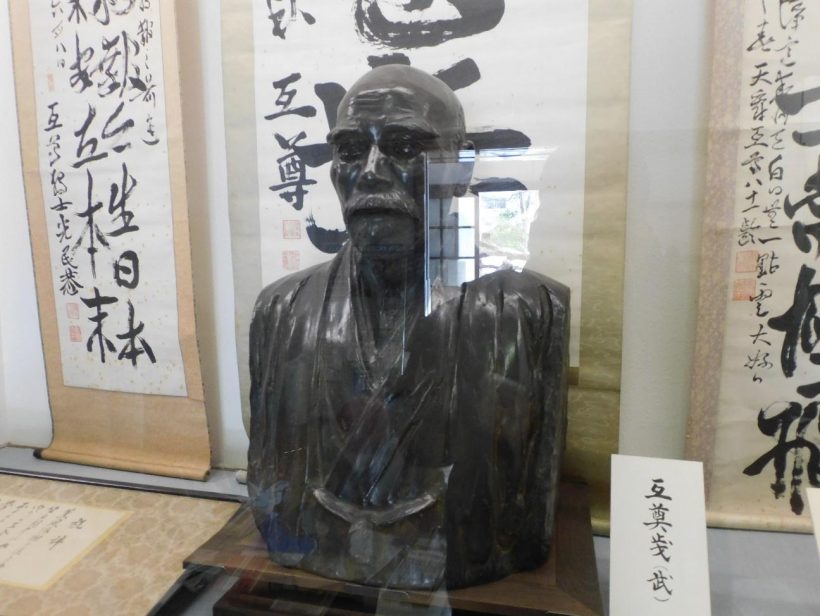
Goson Nomoto (Nagaoka City Science Museum collection)
こちらの記事は、「【新潟県長岡市】農家から商家へ、経済界そして政界へ 日本人の精神にも影響を与えた野本互尊、その生涯を知る」の英語版になります。
日本語の記事は、こちらから → https://www.niikei.jp/613885/
October 24 last year marked the 170th anniversary of the birth of Goson Nomoto (Kyohachiro), a great man associated with Nagaoka City, Niigata Prefecture. Goson means Mutual Respect. There is a growing movement in the local community to pass on Goson Nomoto’s activities to future generations, including the establishment of an association to honor him.
Nomoto was adopted by a merchant family from a wealthy farmer family, and served as a director of the 69th National Bank, a director of Nagaoka Electric Light Company, and a member of the Niigata Prefectural Assembly, advocating and spreading his unique “mutual respect philosophy” that “respecting others as you respect yourself will lead to a happy society. What kind of person was Goson Nomoto to the people of Nagaoka at that time? What kind of influence did he have on the city of Nagaoka? We would like to take a look back at his life and consider this again.
Nomoto was born in 1852 as the fourth son of Heizaburo Yamaguchi, a village headman of the Kamiyama domain in the Oguni area of present-day Nagaoka City, Niigata Prefecture, and his mother, Tose. His older brother was the businessman and politician Yamaguchi Gonzaburo. As a child, he entered the family school called Sanyodo, which was one of the most prestigious schools in Echigo at the time, and studied under Aizawa Hokusai. Later, he entered the Meishinkan branch of the Kaminoyama clan’s domain school.
In 1872, at the age of 20, he became the adopted son-in-law of the Nomoto family, a wealthy merchant in Nagaoka, and succeeded to the family. At the time, Nagaoka was still recovering from the wounds of the defeat in the Boshin War and was facing a major issue of postwar reconstruction. The samurai families and the townspeople had formed factions against each other, which often led to conflicts. At the time, the Nomoto family was engaged in the real estate and money lending businesses. The head of the family was Hui, the adoptive grandmother, followed by his wife, Rii, the eldest daughter, and Ritsu, his younger sister, the only male member of the family. Coming from a farming family, Motoi found himself in a completely different environment from the one in which he had been raised, and he began his journey as a merchant.
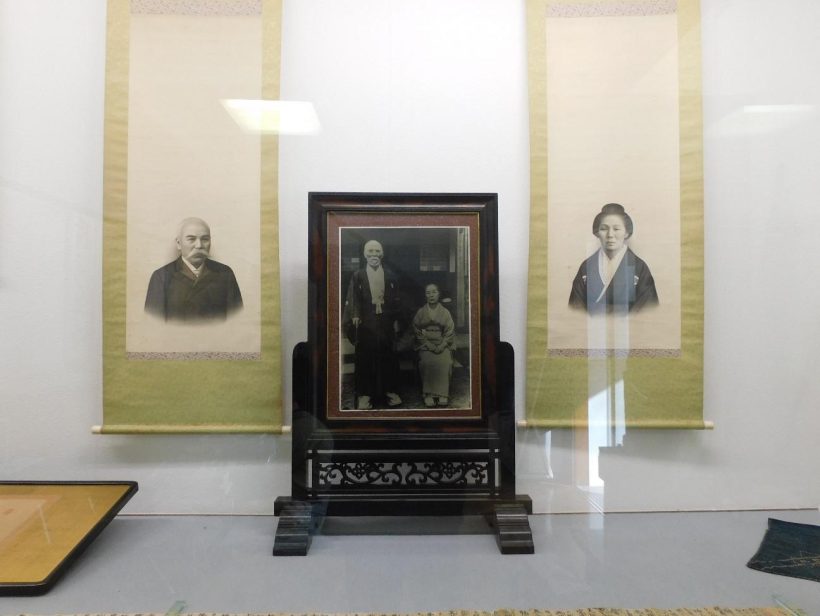
Goson Nomoto (left) and Mrs. Lii (right). Goson called Mrs. Lii “Mrs.”, which was rare in those days. (Nagaoka City Science Museum collection)
In 1880, he teamed up with his older brother Gonzaburo Yamaguchi to organize a group of merchants and traders called “Seishisya“(The community of Sincerity). The name was derived from the phrase “sincerity is the way of heaven and sincerity is the way of man,” and the group aimed to be “a group of sound businessmen with sincerity as their cause. On the evening of December 15 of the same year, at the inaugural meeting of the 69th National Bank, part of the declaration to “control the outflow of money, manufacture domestic products, and encourage exports” was vehemently opposed by Ukichi Kishi, a Chinese goods dealer who was dealing in imported goods at the time. Nomoto, who at the time was an influential representative of the Nagaoka merchants, insisted to Kishi that he should not only think about his own business, but also about how to make his country’s industry flourish, and proposed the development of transportation and the attraction of railroads to his country. Kishi readily agreed to this proposal, and it became the first foothold for Nagaoka’s industrial development.
In the 1887s, Okujiro Mishima, a leading figure of the samurai clan, devoted himself to the development of Hokkaido, and Sahei Ohashi, who had played a central role in the younger generation of merchants, emigrated to Tokyo. In such a situation, he said at the “Sanyakai(three night ceremony),” an economic research group in Nagaoka at the time, “From now on, we must not be without our own ideas. We must not only think, but also put our ideas into practice with each other,” he said in his speech. Nomoto’s speech, which inherited many aspirations from his predecessors, inspired young businessmen of the time such as Hajime Hiroi and Tokichi Watanabe, and became the spiritual foundation for the subsequent development of the Nagaoka business community.
In May 1915, as a commemorative project to celebrate the accession of Emperor Taisho to the throne, the library was donated to the mayor of Nagaoka, who approved the proposal to entrust the management of the library to Nagaoka City. The library was constructed in the area where the former residence of Okujiro Mishima used to be and where the Nagaoka Grand Hotel is now located. Nomoto said around this time, “I did not donate a library. I did not donate “a library”; I donated “The Mutual Respect Library”. It seems that he positioned the library as a place to cultivate the “The Mutual Respect Philosophy” that he advocated and to spread it throughout the world. The library was named “The Mutual Respect Library” on June 8, 1918, and the number of visitors to the library exceeded 50,000 in the year it was opened, whereas no other municipal library in Nagaoka City had ever had more than 10,000 visitors before. Children, the elderly, industrialists, students, and women frequented the library. The library also held lectures and other events, playing a role in the cultural activities of Nagaoka citizens.
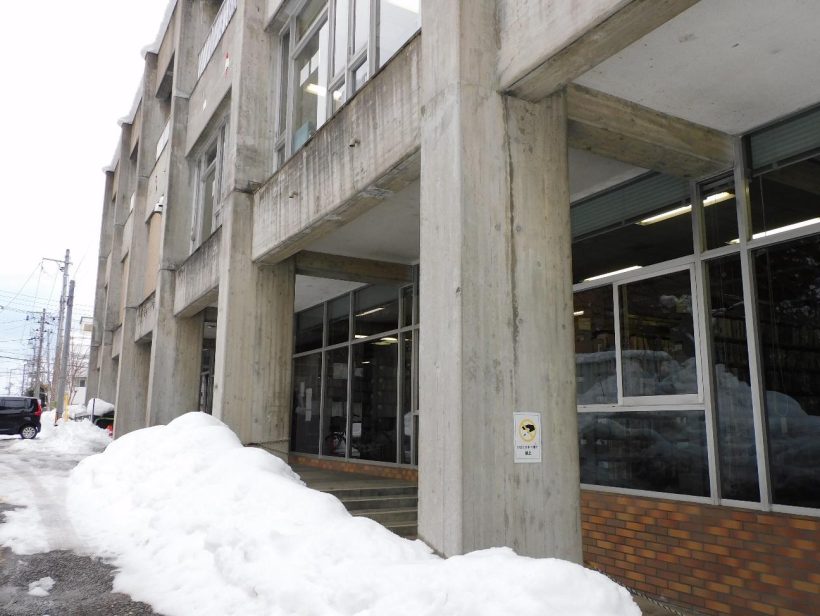
The Mutual Respect Library, built with a donation from Nomoto, was destroyed in an air raid and rebuilt three years later in its present location. When it was rebuilt, it was made of wood, but in the 1960s, it was converted to its current reinforced concrete structure.
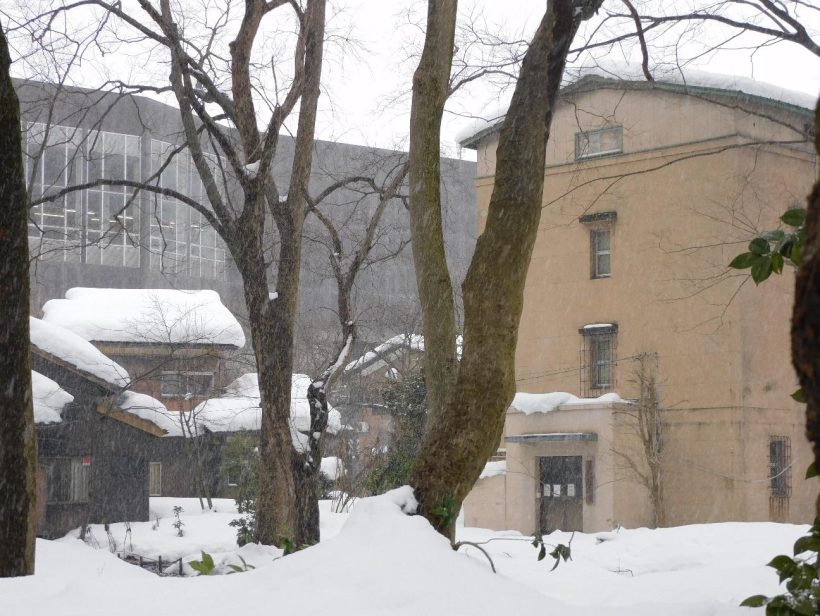
The ruins of Nomoto’s residence are now preserved and utilized as the Nyozezo Museum.
In 1934, the Nihon Mutual Respect Association was established by Nomoto. He and his wife had consulted with each other after he became seriously ill the previous year and decided to invest all of their money in the company. “The Mutual Respect Society in Japan” is an organization to pass on to future generations the “idea of mutual respect and independence” that Nomoto advocated. All six of the children who were to inherit Mutual Respect’s property died early in life, and there were no family members to pass it on.
Nomoto’s influence was not merely limited to Nagaoka. He deeply respected Emperor Meiji, and advocated making Emperor Meiji’s birthday a national holiday, which led to the establishment of the current “Culture Day. He also influenced the formation of the Japanese spirit, for example, by proposing to the Imperial Diet the establishment of a national park on Mt.Fuji
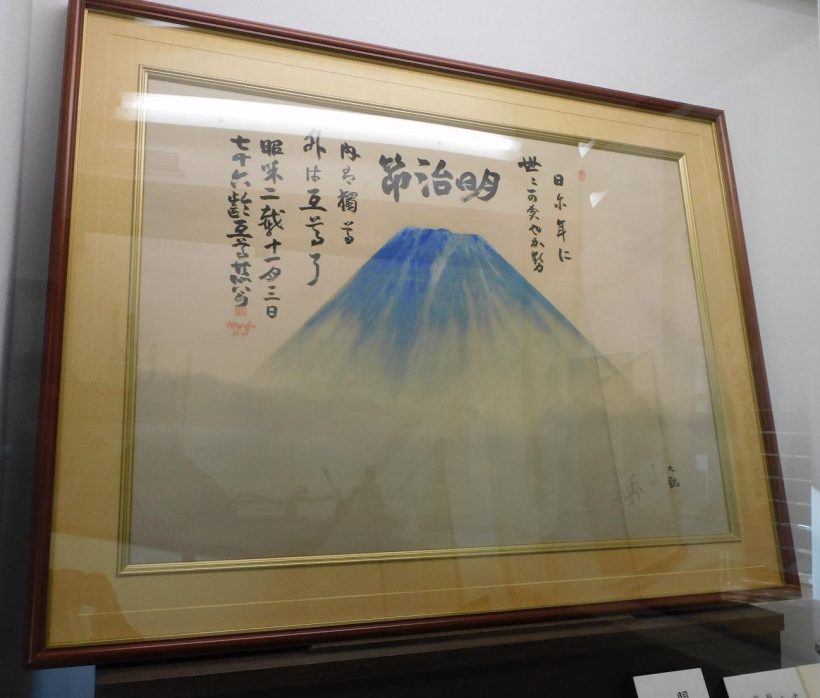
“Meiji-bushi” written on a drawing of Mt. Fuji by Yokoyama Taikan. (Nagaoka City Science Museum)
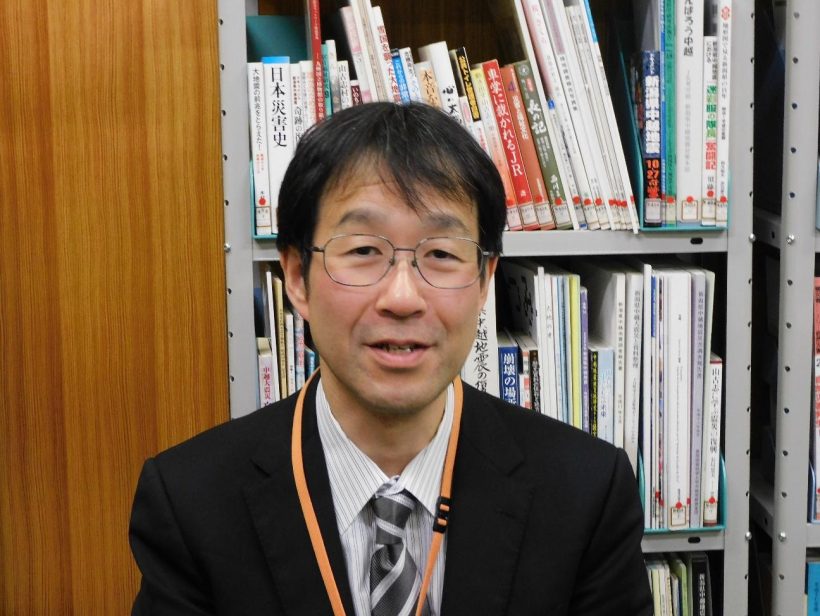
Hiroshi Tanaka, General Manager of the office, says, “Goson Nomoto was a person who contributed to the economy, education, politics, and many other areas of NAGAOKA.
Goson Nomoto , like Okujiro Mishima, was a multifaceted and transversely active person. He contributed to the economy, education, politics, and many other fields in Nagaoka. “He must have been a rare person even in those days,” said Hiroshi Tanaka, 50, head of the Nagaoka City Central Library’s archives and reference room. According to Mr. Tanaka, “Nomoto was called “venerable Goson” even before his death, and a bronze statue of him was erected. He was well respected by the public.
Mr. Tanaka also noted that in his later years, Goson Nomoto invested his fortune in the ” The Mutual Respect Library ” and ” “The Mutual Respect Society in Japan”,” not only because he had no children to succeed him, but also because “people at that time may have had the idea of giving back to society the fortune and wealth that they had collected.
In Japanese philosophical circles today, Kitaro Nishida’s “Nishida Philosophy” is regarded as the first modern and original philosophy by a Japanese. The fruit of Nishida’s philosophy is “Zen no Kenkyu” (“Study of the Good”), published in 1911. Nomoto was already 60 years old in 1911, the same year he submitted a proposal to the Imperial Diet to establish a national park on Mt. Nomoto’s “Mutual Respect Thought” can be considered to be a philosophy that was born at an earlier time than Nishida’s philosophy, or at least at the same time as Nishida’s philosophy, if not a hundred steps earlier. If we interpret Nomoto’s “Mutual Respect Thought” in this way, then it can be said that Nomoto’s “Mutual Respect Thought” is a modern, original philosophy by a Japanese. If this is the case, then Mutsuon Nomoto should be better known by a wider audience.
